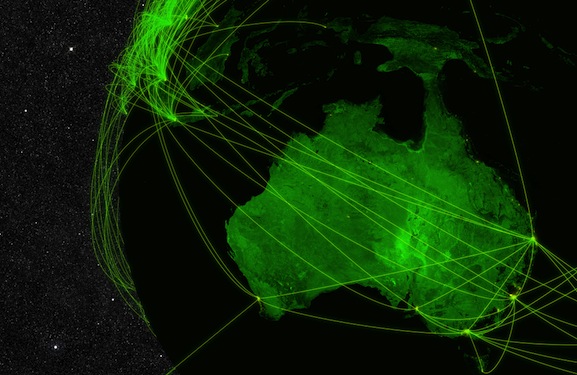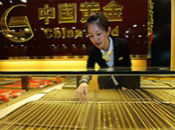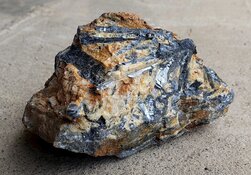The Gold Report: In the last Shaw Stockbroking quarterly report, you wrote that although sentiment in the resource sector is poor, companies have driven operating costs down and reduced capital spending to the point where it could signal the start of a more positive story moving into next year and beyond. Would you please elaborate?
Vincent Pisani: The Australian gold companies have probably been the most proactive in reducing their cost structure over the 12 months. Since gold peaked at US$1,800/ounce (US$1,800/oz) in September 2011, it's been pretty much a relentless drive on the cost side for a large number of our gold producers. The biggest gold producer here is Newcrest Mining Ltd. (NCM:ASX); it produces about 2 million ounces (2 Moz) gold per annum with associated copper. A year ago it was producing gold at an all-in sustainable cost of production of nearly US$1,200/oz. That's OK when the price is US$1,800/oz or even US$1,500/oz, but when the price breached US$1,300/oz, things started to get worrisome.
"Syrah Resources Ltd. is a graphite company with big resources."
Newcrest has around AU$4.1 billion (AU$4.1B) in debt on its balance sheet, so there is the cost of servicing the debt on top of the other mining costs. About 12 months ago, the company brought in Sandeep Biswas as its new CEO. He is what we in Australia call a "toe cutter." He went to all the Newcrest divisions and started aggressively reducing costs. Now, Newcrest is more comfortable with a gold price of around AU$1,200/oz, which is equivalent to US$1,050–1,100/oz.
The minnows—companies that produce between 200,000 and 400,000 oz (200–400 Koz), such as Regis Resources Ltd. (RRL:ASX) or Northern Star Resources Ltd. (NST:AUX)—have done some amazing work to reduce their cost structures to ensure that they generate positive cash flow throughout their divisions.
TGR: What has Mr. Biswas done in more specific terms?
VP: He's reduced the workforce by 400–500 people over the last six months and I think there's more to come as Newcrest streamlines its operations. The gold price is out of his hands. What is in his control is how efficiently his mining operations work. He's saying to his staff that Newcrest wants to be profitable and produce gold for less than AU$1,200/oz over at least the next 12 months.
TGR: What will be the trading range for gold in 2015?
VP: I look at how much economic stimulus has been done in the last three years and what that has done to inflation—and that's basically nothing. It might have spurred a little economic growth or stopped economies from collapsing but Japan has already seen a large stimulus package and it has negative growth. We recently had a G-20 meeting in Australia where global leaders agreed to elevate world economic growth by 2% annually over the next five years. To accomplish that, there could be another round of stimulus packages for big infrastructure projects. Stimulus hasn't done much for the gold price thus far. We've seen unprecedented Chinese demand for gold all the way up to US$1,800/oz and then all the way down to US$1,200/oz, and it hasn't really backstopped prices. Gold's fundamentals need inflation.
TGR: What are some gold companies that you're following that would be considered relatively low-cost producers?
VP: Regis Resources has performed over the last three quarters. It has done a great job with reducing its costs.
If Newcrest gets its act together and shuts down one or two of its projects, the perception of the company being a high-cost producer would change quickly.
I also like Northern Star. It bought some new assets from U.S. majors that pulled out of Australia. It has already cut the costs of production at a number of its new acquisitions by 15–20%. Northern Star management is positioning the company for a very good 2015. It also has its own mining fleet and mining services company.
Others, like Troy Resources Ltd. (TRY:TSX; TRY:ASX), are developing projects that will be low-cost operations. Troy's new production facility, which starts up in June in Guyana, will have an operating cost of around US$600/oz, so it should have good cash flow straight away.
TGR: When Northern Star made those deals to buy some of those assets from Barrick Gold Corp. (ABX:TSX; ABX:NYSE), what was the market's reaction?
VP: It was hugely positive. If I recall, the stock ran up to AU$1.80 from around AU$1.20 on the back of those acquisitions. Northern Star already had proven itself with an operation called Paulsens. When Northern Star bought Paulsens, it was a small mine capable of producing 70–80 Koz/year for two, maybe three years. It has since operated for five years and has at least that many years left due to some great exploration work. It's a low-cost producer that has made Northern Star a lot of money. The company has since applied that cost-cutting template to its new mines. Northern has a lot of cash on the balance sheet, and has low debt. The stock has since fallen back to AU$0.90, so that is a tremendous buying opportunity for anyone who likes the assets and management. It's probably worth around $1.50/share.
TGR: What other companies are you following?
VP: One is Teranga Gold Corp. (TGZ:TSX; TGZ:ASX), an interesting company. Its gold production is very strong. In September, it was up 30% to nearly 50 Koz versus the same period a year ago. Its operating cost base is in the mid-US$700s/oz and the all-in sustainable costs are below US$1,000/oz, so it has a very good margin. The grade is strong, too. A 3–4 gram per ton ore body is going to make money in this sort of environment. I am expecting a strong December quarter, somewhere around 70–75 Koz, at fairly low costs.
TGR: Are you more likely to cover companies operating in Africa versus North America?
VP: Our prime focus is obviously companies that are listed in Australia. Teranga is listed here but Africa is becoming far more interesting. The bigger companies are not looking for assets in Asia, Indonesia or South America, except for Troy, which has had a long operating history in South America; they're all looking at Africa. I think Africa will become a focal point of Australian miners if they have cash on the balance sheet. If a company doesn't have the cash, it can't do anything. A lot of these companies probably had mergers and acquisitions (M&A) in their sights a year ago, and they're more likely to be part of an M&A deal if they don't watch their cost base.
TGR: We're covering a range of mined commodities today. Are the fundamentals for copper positive? Will the red metal stay above US$3/pound (US$3/lb) for most of 2015?
VP: Over the next six months, copper is going to stay between US$3 and 3.20/lb. There isn't much fundamental demand driving copper prices. If we look at copper and aluminum as commodities, it's probably cheaper to substitute between the two, with aluminum at US$2,000/ton versus copper at US$7,000/ton. There is currently about 400,000–500,000 tons (400–500 Kt) in surplus copper.
Meanwhile, BHP Billiton Ltd. (BHP:NYSE; BHPLF:OTCPK) is seeing grade declines and cost increases at Escondida in Chile, its main production facility. BHP says it will probably produce 300 Kt less copper in 2016 than it will this year. In general, grades of copper have come down from 1.1–1.2% to below 1% now, and that's a concern. But there are new producers on the market, such as Rio Tinto Plc's (RIO:NYSE; RIO:ASX; RIO:LSE; RTPPF:OTCPK) Oyu Tolgoi mine in Mongolia. That's a big player in a weak market. Next year is probably going to be a transition year for copper; 2016-2017 will probably be a better time to be a copper producer.
TGR: What are some copper miners operating in Australia?
VP: OZ Minerals Ltd. (OZL:ASX) and Sandfire Resources NL (SFR:ASX) are our two biggest listed copper producers outside of BHP and Rio Tinto. We have a strong Buy recommendation on OZ Minerals with a valuation of AU$4.80. The share price is currently around AU$3.10. OZ has spent about three years getting its mining operations ready for a bigger open-pit and underground operation. It spent a lot of money on predevelopment work. With that work finished, cash flow should improve dramatically over the course of 2015 and 2016. OZ also produces byproduct gold from that same operation and should post much lower production costs going forward. In the last quarter, its average copper cash costs were around $0.60/lb.
TGR: What about Sandfire?
VP: Sandfire is in the same boat with cash costs around AU$1.15/lb. It is a solid, high-grade producer. It will be mining from three different underground operations inside 12 months. It is expected to maintain a 5% copper grade for quite some time, so its cost of production should stay around AU$1.20/lb. It produces good cash flow and is certainly one of our preferred equities.
TGR: Moving from copper mining to nickel mining, how is the ban on nickel concentrate exports from Indonesia affecting the fundamentals of that commodity?
VP: The Indonesian ban started on Jan. 14, 2014. People panicked because Indonesia is a big supplier of nickel concentrate to the Asia Pacific market, particularly China. The nickel price went to US$20,000/ton from US$14,000/ton over five months. The panic wasn't justified because the Chinese had bought a huge amount of nickel concentrate in advance of the ban. Chinese stainless steel producers, which use most of that nickel, were probably in much better shape to handle an Indonesian ban than the stock market expected. Consequently, we've seen the nickel price fall over H2/14.
Since August, London Metals Exchange (LME) nickel stocks have gone up by about 30%, which suggests a surplus, and producers, in general, have maintained production. But most of the demand is in the Asia Pacific region where we've seen nearly 10 months of zero supply from Indonesia. By April 2015, we could be in another period of technical shortage in the Asia Pacific region, much as we saw with aluminum. There was a big increase in aluminum LME stocks throughout 2013 and into 2014, but premiums in the Asia Pacific market for aluminum have been US$300–400/ton above LME. This is likely to happen with nickel, too. I'm bullish on nickel at current levels. It could move back up to US$20,000/ton. A few of our nickel companies are extraordinarily cheap for the cash flow they produce.
TGR: What are some of those nickel names?
VP: I really like the fundamentals of Mincor Resources NL (MCR:ASX). Mincor is a Kalgoorlie-based, low-cost nickel producer, with good cash on the balance sheet, and has paid a dividend 12 out of the last 13 years. That shows how good it is on the operations side. It's trading at close to its 52-week low at around AU$0.55–0.57. That's one stock that could really move higher in 2015.
The other big company here is Western Areas Ltd. (WSA:ASX; FX9:FRA; WNARF:OTCMKTS). It's a producer in Western Australia with high-grade deposits running 5–6% nickel. And with a market cap around AU$1B, it's a robust company for domestic and international institutions to buy because there's always liquidity in the stock, and it is an exceptionally good producer. Those are the two major ones I would look at.
TGR: Another commodity that you follow is graphite. What's your outlook for graphite, given its growing use in lithium ion batteries, permanent batteries and refractories?
VP: I'm probably not as bullish as others. Graphite is a bulk commodity. There are plenty of graphite resources around the world. Two companies with big resources are Syrah Resources Ltd. (SYR:ASX), which has over 1 billion tons (1 Bt), and Triton Minerals Ltd. (ASX:TON) with another 1.4 Bt. The graphite market is still developing. And forget graphene as an investment thesis because demand from the graphene-related technology will be low for the next three or four years.
Graphite use in batteries is on the rise but analysts tend to get a bit too emotional about how quickly some of these industries are going to soak up all the world's graphite. Tesla Motors Inc. (TSLA:NASDAQ) is going to produce 500,000 units annually; that demands lots of graphite and lithium, but by the time it starts production it's a 2019 story. Tesla is going to be selective and spread its love around the world. Some Canadian producers will probably supply Tesla but projects in Africa have a big advantage. In general, there are bigger ore bodies there at better grades than anything I see in Canada or the U.S. Companies mining graphite in Africa are going to have low operating and capital costs per ton.
If a company plans to provide flake graphite to the lithium ion battery market, think again because there are probably 15–20 companies negotiating with the same end users. Bulk graphite production is probably a smarter space to be in long term because it has much lower costs of production, so those companies are going to be profitable at lower graphite prices.
TGR: In your recent quarterly report, you noted that graphite prices dropped 5–7% in the previous quarter. Should investors expect further price weakness?
VP: Graphite prices are probably going to be fairly stable over the course of 2015. Let's see what happens after any new production comes on-line.
TGR: You mentioned Syrah. That company recently announced that it had a memorandum of understanding (MOU) with Asmet Ltd. for 100–150 tons per year of graphite at US$1,000/ton. Your thoughts?
VP: That's a situation where company management asked: "I have a lot of cash flow sitting in this deposit. How can I maximize the sales volume?" Syrah approached Asmet, a big producer of recarburized parts for engines, and said we can provide you with a very good product that you're paying US$1,200–1,500/ton for now. We can give it to you for US$1,000/ton. Syrah's operating cost per ton on large-volume production is going to be around US$200/ton.
If a company signs an MOU for US$1,000/ton and that becomes a binding contract, it is going to make a lot of money. Is bulk graphite going to be a growing market? Absolutely. If companies can provide bulk graphite at a low price into specific markets, those companies will make lots of money. If companies are targeting niche markets with battery-grade graphite, their costs of production are going to be high and those companies are not going to make as much money as people think.
TGR: What is next for graphite companies?
VP: The next question for a lot of companies is will they have the resource good enough to get financing in this environment? Very few companies are capitalized over AU$100 million (AU$100M). Syrah and two or three others are around AU$100M, then it falls to AU$50M. Capital costs are AU$100–150M to get into production—two or three times current market caps. It's going to be an interesting 2015 for graphite companies.
TGR: Is it the same story for lithium? Companies in that space are also largely dependent on offtake deals.
VP: Lithium is slightly different because there are only a few good deposits. If a company is producing lithium and has a track record in lithium, it is probably in good stead. But there are very few. How many producers are there in lithium? A lot less than there will be in graphite, so there's probably a better market in lithium than there is in graphite at this point.
TGR: What are the catalysts for lithium? Is it all about the electric vehicles?
VP: That's about it. We will probably see more electric vehicles sold in 2015 than in the history of mankind—and that number will only go up. Tesla is selling thousands of vehicles per annum, and that's just one of many manufacturers. From BMW to Land Rover to Mercedes, just about every car manufacturer is looking at electrical vehicles. Who is going to be supplying those manufacturers? We have to look at the big Japanese car manufacturers and if a company is not aligned with some of those with graphite or lithium offtake contracts, then it doesn't have much of a chance to succeed.
TGR: Are there lithium companies that you're following?
VP: One that is listed here in Australia and heavily owned by institutional clients is Orocobre Ltd. (ORL:TSX; ORE:ASX). It has been very well owned because there are not many low-cost lithium mines in production and that company has one. Orocobre is a good industrial mineral producer that ticks off a lot of boxes: very good ore body, good location in Argentina, good production, low cost. It's a very good little company.
TGR: Thank you for your insights, Vincent.
[Editor's note: This article was corrected on 12/31/14; Orocobre's resource is in Argentina, not Chile.]
Vincent Pisani has been the senior resources analyst at Shaw Stockbroking in Sydney, Australia, for four years and prior to that served as an institutional dealer at Shaw. He was managing director of Cazenove Australia for three years and for nine years was the director of resources research at UBS. He was a Buy Side fund manager with Prudential and Bankers Trust for seven years.
Read what other experts are saying about:
Want to read more Gold Report interviews like this? Sign up for our free e-newsletter, and you'll learn when new articles have been published. To see a list of recent interviews with industry analysts and commentators, visit our Streetwise Interviews page.
DISCLOSURE:
1) Brian Sylvester conducted this interview for Streetwise Reports LLC, publisher of The Gold Report, The Energy Report, The Life Sciences Report and The Mining Report, and provides services to Streetwise Reports as an independent contractor. He owns, or his family owns, shares of the following companies mentioned in this interview: None.
2) The following companies mentioned in the interview are sponsors of Streetwise Reports: Syrah Resources Ltd. The companies mentioned in this interview were not involved in any aspect of the interview preparation or post-interview editing so the expert could speak independently about the sector. Streetwise Reports does not accept stock in exchange for its services.
3) Vincent Pisani: I own, or my family owns, shares of the following companies mentioned in this interview: None. I personally am, or my family is, paid by the following companies mentioned in this interview: None. My company has a financial relationship with the following companies mentioned in this interview: None. I was not paid by Streetwise Reports for participating in this interview. Comments and opinions expressed are my own comments and opinions. I determined and had final say over which companies would be included in the interview based on my research, understanding of the sector and interview theme. I had the opportunity to review the interview for accuracy as of the date of the interview and am responsible for the content of the interview.
4) Interviews are edited for clarity. Streetwise Reports does not make editorial comments or change experts' statements without their consent.
5) The interview does not constitute investment advice. Each reader is encouraged to consult with his or her individual financial professional and any action a reader takes as a result of information presented here is his or her own responsibility. By opening this page, each reader accepts and agrees to Streetwise Reports' terms of use and full legal disclaimer.
6) From time to time, Streetwise Reports LLC and its directors, officers, employees or members of their families, as well as persons interviewed for articles and interviews on the site, may have a long or short position in securities mentioned. Directors, officers, employees or members of their families are prohibited from making purchases and/or sales of those securities in the open market or otherwise during the up-to-four-week interval from the time of the interview until after it publishes.




































